Alginates
Measuring
Why is it important to measure out the water and powder correctly as indicated on the pack?
Although alginate is easy to handle, correct management of the water/powder ratio influences the properties of the material [1].
An incorrect water/powder ratio will affect the consistency of the material. An incorrect water/powder ratio can also affect the declared product performance in terms of mechanical characteristics, times and dimensional stability.
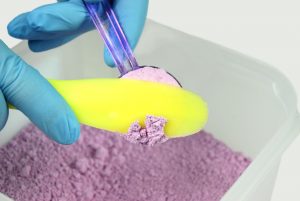
Mixing
Why should the water be added after the alginate powder?
When mixing is performed manually, it is preferable to add the water after measuring out the powder in order to reduce the surface porosity of the mix [2].
Want to know more? Read how to achieve an optimum result with alginate mixing.
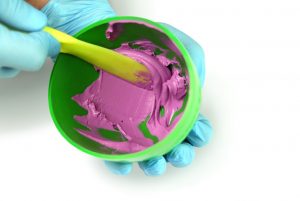
Impression taking
Which is the best impression tray to use?
The type of impression tray depends on the clinical case and the practitioner’s preferences and habits. In order to improve the retention between alginate and impression tray, it is advisable to use either a perforated impression tray or a specific adhesive for alginates [3].

Disinfection and storage
If I leave the impression immersed in the disinfectant solution, will it be damaged?
Leaving the impression in the disinfectant solution for longer than indicated by the manufacturer can damage the impression and cause dimensional changes: hydrocolloids are by nature hydrophilic, and therefore tend to swell when immersed in water or disinfectant [4].
How should I store impressions?
If the gypsum cannot be cast immediately, eliminate the excess water and store the impression at room temperature 2323°C) in an airtight polyethylene bag.
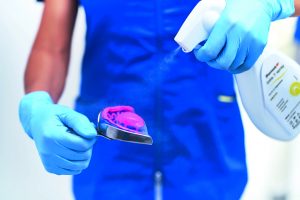
Addition silicones: Elite HD+ and Hydrorise System
Measuring
Why is it important NOT to switch the base and catalyst measuring spoons?
Switching the measuring spoons when measuring out the products (measuring the base with the catalyst spoon and vice versa) results in the contamination of the base and/or catalyst, which prevents them from polymerising correctly.
Can the cap be placed back on the cartridge (50 ml and 380 ml) after use?
No, once it has been removed from the cartridge it must be thrown away to avoid the risk of contamination between base and catalyst.
After use, it is advisable to keep the tip on the cartridge until the next time it is used.
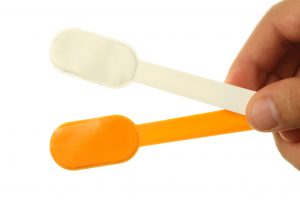
Levelling the material
Before using 50 ml and 380 ml cartridges, why is it important to always (in any case before each use) level the material before inserting the mixing tip?
It is important to level the material before each use to ensure that equal amounts of base and catalyst are dispensed.
If this is not the case, the mixing of the two components will be sub-optimum, with negative consequences on the polymerisation of the material.
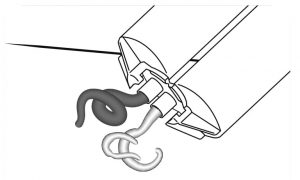
Gloves
Can the material be handled with latex gloves?
No, addition silicones can not be handled using gloves made of latex because it interferes with the platinum catalyst and prevents its polymerisation. Vinyl or nitrile gloves can be used instead.
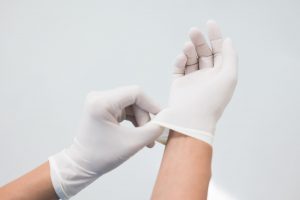
Disinfection
If I disinfect the impression (including by immersion) will this have consequences on its accuracy?
No, if disinfectants containing quaternary ammonium salts or alcohol are used observing the instructions for use (contact and dilution times), the material will not undergo significant changes in terms of either its dimensional stability or its surface detail reproduction.
Impressions must always be disinfected before they are sent to the lab, in order to reduce the risk of cross contamination.

Bite Registration
Positioning
In what way is thixotropy advantageous in a bite registration material?
A thixotropic material is charatcterised by the fact that it does not flow when distributed over the occlusal plane and does not run when subjected to a mechanical force. This characteristic allows for an easy application of the material.
Want to know more? Find out all about Bite registration with thixotropic materials.
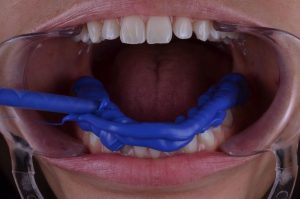
Occlusion
Why it is important for the material to have an imperceptible consistency?
The material’s imperceptible consistency means that it does not interfere with occlusion, which prevents the displacements of the teeth or jaw that cause errors [1].
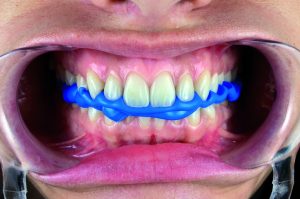
Removal
Why isn’t the material polymerised when removed from the patient’s mouth?
The polymerisation of addition silicones can be inhibited in the case of contamination with latex, gingival retraction solutions, polyether or acrylic or bis acrylicresin residues.
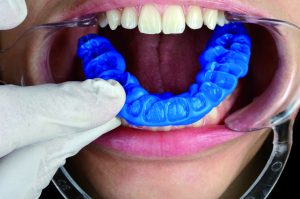
Disinfection
Why it is important for a material to remain stable even after disinfection?
Any dimensional change in the bite registration affects the correctness of the occlusal relationship. It could cause the dental technician to mount the gypsum models on the articulator in a different position to that measured in the patient’s mouth.
This will subsequently make it necessary to adjust the prosthesis made on the model once it has been fitted. [2]

Condensation silicones: Zetaplus
Measuring out products
Why is it important to observe the base/catalyst ratio when measuring out the products?
Incorrect measuring of the catalyst causes variations in the chemical and physical properties of the material and ultimately influences product performance.
For example, using more catalyst than indicated in the Instructions for use results in an impression with poorer dimensional stability and shorter working time and time in mouth.
Want to know more? Discover the features and benefits of Zetaplus.
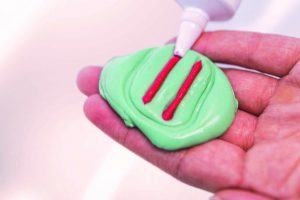
Gloves
Can the material be handled with latex gloves?
Yes, condensation silicones can be handled using latex, vynil and nitrile gloves, without the risk of affecting their performance.

Compatibility between materials
Can I use a condensation silicone as a tray material and an addition silicone on preparations?
No, addition and condensation silicones must not be used together.
Zhermack does not guarantee correct adhesion between the two materials as they arechemically very different.
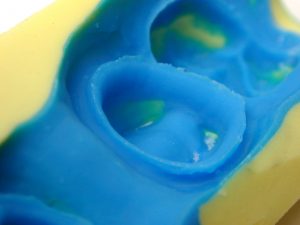
Disinfection
If I disinfect the impression (including by immersion) will this have consequences on its accuracy?
No, if disinfectants containing quaternary ammonium salts or alcohol are used observing the instructions for use (contact and dilution times), the material will not undergo significant changes in terms of either its dimensional stability or its surface detail reproduction.
Impressions must always be disinfected before they are sent to the lab, in order to reduce the risk of cross contamination.

Alginates Notes
[1] Dreesen K, Kellens A, Wevers M, Thilakarathne P, Willems G. The influence of mixing methods and disinfectant on the physical properties of alginate impression materials. European journal of orthodontics.2012; 35(3). doi: 10.1093/ejo/cjs031
[2] McDaniel TF, Kramer RT, Im F, Snow D. Effects of mixing technique on bubble formation in alginate impression material. General Dentistry, 2013 Sep-Oct; 61(6): 35-39[2]: A. Punj, D. Bompolaki, J. Garaicoa, Dental Impression Materials and Techniques., Dent Clin North Am., 2017
[3] Thirunavakarasu R, Nittla P. P, Alginate impression material-a review, Drug invention today. 2018; 10(4): 3556-3561. ISSN: 0975-7619
[4] Nandini VV, Venkatesh KV, Nair KC. Alginate impressions: A practical perspective. J Conserv Dent. 2008;11(1):37–41. doi : 10.4103/0972-0707.43416
Bite Registration Notes
[1] Mobilio M, Catapano S. Effect of experimental jaw muscle pain on occlusal contacts. Journal of Oral Rehabilitation. 2011; 38(6): 404-409. doi: 10.1111/j.1365-2842.2010.02173.x
[2] Chandu G S, Khan M F, Asnani P. Evaluation and comparison of resistance to compression of various interocclusal recording media: an in vitro study. Journal of international oral health. 2015; 7(5): 24-29. PMID: 26028898





